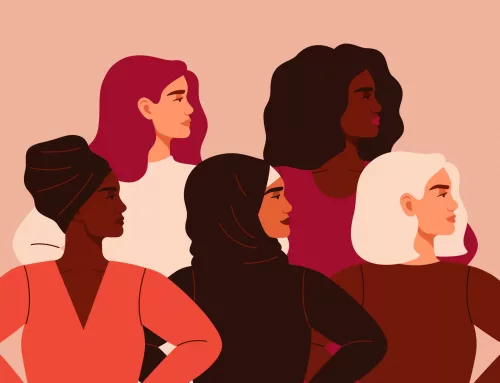23 Women and Men Job Statistics – What the Stats Tell Us
Get ready to learn more about common trends in the workplace with our roundup of women and men job statistics. We know that gender has a wide spectrum but this article focuses on statistics on people who have identified as Male or Female in the workplace. As we dive into the numbers, one thing quickly becomes apparent: there are still major inequalities and disparities in our workplace. While progress has been made, data shows that we still have a long way to go in terms of equal representation and opportunities for all genders and minority groups.
In this article, we’ll dive into 23 women and men job statistics that cover everything from income gaps to representation in leadership positions. Let’s take a look.
Check Out These Women and Men Job Statistics
The following numbers help showcase where we are making progress, where we need to improve, and what actions leadership must take in every organization to create an equitable future for all.
- Globally, the labor force participation rate for women is around 47%. For men, it’s 72%. Overall, that is a 25 percentage point difference. However, certain regions face a larger gap of more than 50 percentage points. (Source: InfoStories)
- More women are earning degrees than before. From 1970 to 2019, the number of women ages 25 to 64 in the workforce who held a college degree quadrupled. At the same time, the number of men with a college degree only a little more than doubled. (Source: S. Bureau of Labor Statistics)
- Canada has the highest female participation rate in the workforce at 61.3%. (Source: TeamStage)
- While women are taking on more professional roles, only 27.1% of women hold positions as managers and leaders. (Source: TeamStage)
- When comparing the largest racial and ethnic groups, Black women 16 years of age and older had the highest national workforce participation rate at 59.2%. (Source: Women’s Labor Force Participation)
- Back in 2016, ILO and Gallup surveyed women globally to ask if they preferred to work in paid jobs, care for their families, or do both. The data showed that an incredible 70% of women—regardless of their employment status at the time—would prefer to work in paid jobs. (Source: InfoStories)
- While women struggle to attain leadership roles, of the women who are in executive roles, 81% are white. Comparatively, 6% are Black and 3% are Hispanic. (Source: CNBC)
- We talk a lot about the pay gap for women. However, a study showed that Black men have the largest “uncontrolled pay gap” relative to White men. On average, Black men in the U.S. earn 87 cents for every dollar White men earn. Hispanic workers face the next largest gap, earning 91 cents for every dollar earned by White men. (Source: SHRM)
- At Fortunate 500 companies, there are 74 women holding CEO positions. (Source: What To Become)
- An incredible 606 million highly educated women worldwide are still providing unpaid care on a full-time basis. As few as 1.5% of men, or around 41 million men are providing unpaid care in contrast to 21.7% of women. (Source: TeamStage)
- Around 65% of women believe they are underrepresented in leadership roles and they attribute this fact to confidence. (Source: TeamStage)
- A study showcased that hiring managers—regardless of their gender—are two times as likely to hire candidates who are men. (Source: BuiltIn)
- In 2021, around 8% of the CEO workforce at Fortune 500 companies was comprised of women. (Source: BuiltIn)
- Only 26% of women in the workforce reside in the C-suite, and a meager 5% of those leaders are women of color. (Source: BuiltIn)
- As of 2022, only six Fortune 500 companies have a CEO who is Black. (Source: BuiltIn)
- Not only is there inequality in the number of Black men and women in C-suite positions, but executive-level Black men earn 97 cents for every dollar White men with the same qualifications earn. The racial wage gap only widens as Black men move up the corporate ladder. (Source: SHRM)
- When comparing workers in high-wage occupations, such as lawyers, engineers, and physicians, Black women who work full-time are typically paid about $70,000. This is compared to the $110,000 typically paid to White, non-Hispanic men in the same roles. (Source: SHRM)
- Sixty years ago, 97% of men of so-called prime-working age (25 to 54 years of age), were working or looking for work. Since then, the numbers have been in decline. More recently, the number has dropped to 88.5%. (Source: NPR)
- In the health, education, administration, and literacy (HEAL) roles, men are scarce. Looking at psychologists under the age of 30, only 5% are male. (Source: NPR)
- Similarly, when looking at HEAL roles, in 1980 40% of elementary school teachers were male. Now, only 10% of elementary teachers are male. (Source: NPR)
- When it comes to applying for a new position, men are more likely to apply for any role that interests them, even if they only meet 60% of the job requirements. (Source: Undercover Recruiter)
- Of the highest labor force participation rates, Hispanic or Latino men lead the way with the highest rates by race and gender of any demographic combination in the United States. (Source: Center for American Progress)
- Only a shockingly small percentage—0.4% to be exact—of Fortune 500 Companies make their diversity and inclusion data publicly available. (Source: BuiltIn)
What Women and Men Job Statistics Tell Us
When looking at women and men job statistics, and diving even deeper into the numbers surrounding minorities in the workplace, it can feel sobering. There’s a lot of talk about diversity and inclusion in the workplace coming from C-suites around the globe. However, it seems apparent that we still have a long way to go. The last statistic is particularly sobering. What good does it do for companies to promise diversity and inclusion if they aren’t willing to report on their progress to the public?
So, what can we do?
First off, we can remind leadership that diversity is critical to organizational success. When consulting firm McKinsey looked at the data, they found that more diverse companies are positioned to greatly outperform their homogeneous counterparts. Additionally, according to their 2019 study, organizations in the top quartile of gender diversity on executive teams were 25% more likely to experience above-average profitability than their counterparts who were in the fourth quartile.
Secondly, we need to continue to put pressure on companies to publish their diversity and inclusion data. Promising to change is not enough—organizations must be held accountable.
Finally, we need to look for ways to raise each other up. For those who are achieving great success in their career, now is the time to mentor someone in your community or company who might need an extra helping hand. For those who are looking for inspiration, we can find motivation and ideas from global leaders who have used their diversity as a foundation for their success. Together, we can build a more equitable future for all.








